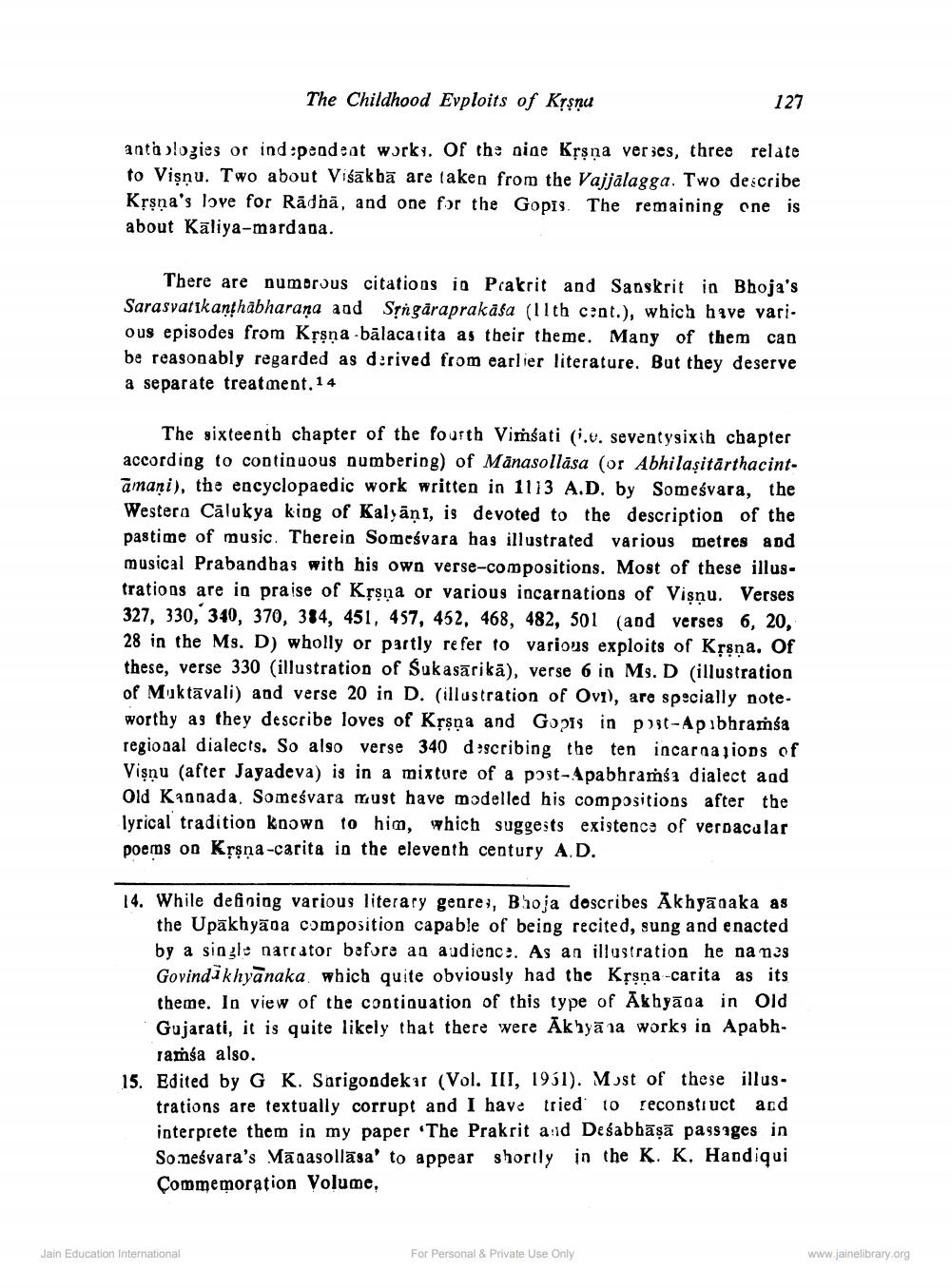________________
The Childhood Evploits of Kęşnu
127
antalogies or ind:pendeat works. Of the nine Krsna ver ses, three relate to Vişnu. Two about Višākbā are taken from the Vajjālagga. Two describe Krsna's love for Rädhā, and one for the Gopis. The remaining one is about Kāliya-mardana.
There are numerous citations in Prakrit and Sanskrit in Bhoja's Sarasvatikanthabharana and Sțngäraprakasa (11th cent.), which have vari. ous episodes from Krsna - bālaca uita as their theme. Many of them can be reasonably regarded as derived from earlier literature. But they deserve a separate treatment. 14
The sixteenth chapter of the fourth Vimsati (.v. seventysixih chapter according to continuous numbering) of Mānasollăsa (or Abhilasitarthacintamani), the encyclopaedic work written in 1113 A.D. by Someśvara, the Western Cālukya king of Kalyāņi, is devoted to the description of the pastime of music. Therein Someśvara has illustrated various metres and musical Prabandbas with his own verse-compositions. Most of these illustrations are in praise of Krsna or various incarnations of Visnu. Verses 327, 330, 340, 370, 384, 451, 457, 452, 468, 482, 501 (and verses 6, 20, 28 in the Ms. D) wholly or partly refer to various exploits of Krsna. Of these, verse 330 (illustration of Sukasācika), verse 6 in Ms.D (illustration of Muktāvali) and verse 20 in D. (illustration of Ovi), are specially noteworthy as they describe loves of Krsna and Gopis in pust-Apibhramsa regional dialects. So also verse 340 describing the ten incarnazions of Vişnu (after Jayadeva) is in a mixture of a post-Apabhramba dialect and Old Kannada, Someśvara must have modelled his compositions after the lyrical tradition known to him, which suggests existence of verbacalar poems on Krşņa-carita in the eleventh century A.D.
14. While defining various literary genres, Bhoja describes Akhyā saka as
the Upākhyāoa composition capable of being recited, sung and enacted by a single narrator before an audienc:. As an illustration he na n23 Govindakhyanaka which quite obviously had the Kșşņa -carita as its theme. In view of the continuation of this type of Akhyāna in Old Gujarati, it is quite likely that there were Akhyāna works in Apabh
ramsa also. 15. Edited by G K. Sarigondekar (Vol. II, 1951). Most of these illus
trations are textually corrupt and I have tried to reconstruct acd interprete them in my paper «The Prakrit ad Deśabbāşā passages in Someśvara's Māgasollāsa' to appear shortly in the K. K. Hapdiqui Commemoration Volume,
Jain Education International
For Personal & Private Use Only
www.jainelibrary.org




